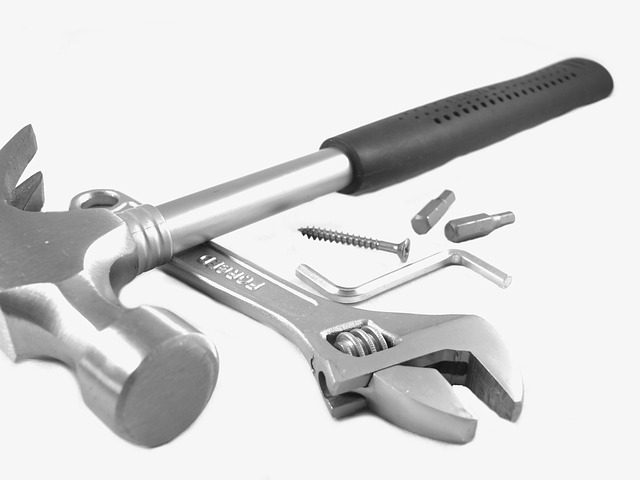Tool theft in the construction industry
Thieves employing increasingly sophisticated methods are costing UK tradespeople millions of pounds a year as tool theft reaches an all-time high. Criminals are using complex methods such as electronic fob interception and a technique known as 'peel & steal', which has contributed to the rising number of thefts.
Research has uncovered that tool theft is costing tradespeople around £100 million per year, with a single break-in costing the average tradesperson around £14,000 once the cost of replacements and lost-earnings are factored in.
The worst locations for tool theft are:
- London
- Sheffield
- Birmingham
- Leicester
- Chelmsford
- Tunbridge Wells
- Bristol
- Nottingham
- Northampton
- Reading
Somewhat unsurprisingly, London led the way as England's tool-theft capital, though the matter is far from a localised issue. Behind London, areas as far and wide as Sheffield, Birmingham, Tunbridge Wells and Nottingham also made the list.
A tradesperson's van is broken into and their tools stolen every 23 minutes across the UK, with as many as 50% of tradespeople having been a victim of a theft at least once.
With the average claim costing victims £1,692, it’s unsurprising that half of tradespeople who’ve experienced tool theft could not work afterwards. Although some people have to take one or two days off, research shows that some people have had to take a fortnight off work, before they could afford to replace the stolen tools.
Sadly, such a trend shows no sign of abating, with the average tool theft claim rising over 15% from 2016 to 2017.
Research into vehicle theft across 43 police forces in England and Wales showed that most cases go unsolved, with as many as 75% of reported thefts being closed without ever finding a suspect.
With such news in mind, tradespeople are advised to take the following precautions to protect their valuable tools.
- Leave no tools inside a vehicle overnight - tools should be taken indoors and stored in a safe, secure location.
- Park in a safe location - Security experts recommend parking in well-lit areas with plenty of footfall that are in view of a CCTV camera. Ideally, vans should be parked with side or rear doors up against a wall so that they can't be accessed.
- Invest in extra security for vehicles - Window grills and tints can serve as an effective deterrent for would-be thieves, while an internal locking system can make breaking in much more difficult.
- Secure van’s windows - To help keep tools out of eyesight and prevent easy accessibility, secure windows using grills or tints.
- Keep a note of tool’s serial numbers - If your tool is found after being stolen, it will help determine who it belongs to.
Other suggestions include marking tools and taking out tool insurance to reduce the financial burden of a theft.
[edit] Related articles on Designing Buildings
- Construction plant.
- Construction staples.
- Construction tools.
- How to manage construction plant.
- Personal protective equipment.
- Scaffolding.
- Surveying instruments.
- Tool and equipment care and maintenance.
- Trade.
- Types of bolts.
- Types of crane.
- Types of nails.
- Types of nuts.
- Types of screws.
- Vesting certificate for construction goods plant or materials.
Featured articles and news
One of the most impressive Victorian architects. Book review.
RTPI leader to become new CIOB Chief Executive Officer
Dr Victoria Hills MRTPI, FICE to take over after Caroline Gumble’s departure.
Social and affordable housing, a long term plan for delivery
The “Delivering a Decade of Renewal for Social and Affordable Housing” strategy sets out future path.
A change to adoptive architecture
Effects of global weather warming on architectural detailing, material choice and human interaction.
The proposed publicly owned and backed subsidiary of Homes England, to facilitate new homes.
How big is the problem and what can we do to mitigate the effects?
Overheating guidance and tools for building designers
A number of cool guides to help with the heat.
The UK's Modern Industrial Strategy: A 10 year plan
Previous consultation criticism, current key elements and general support with some persisting reservations.
Building Safety Regulator reforms
New roles, new staff and a new fast track service pave the way for a single construction regulator.
Architectural Technologist CPDs and Communications
CIAT CPD… and how you can do it!
Cooling centres and cool spaces
Managing extreme heat in cities by directing the public to places for heat stress relief and water sources.
Winter gardens: A brief history and warm variations
Extending the season with glass in different forms and terms.
Restoring Great Yarmouth's Winter Gardens
Transforming one of the least sustainable constructions imaginable.
Construction Skills Mission Board launch sector drive
Newly formed government and industry collaboration set strategy for recruiting an additional 100,000 construction workers a year.
New Architects Code comes into effect in September 2025
ARB Architects Code of Conduct and Practice available with ongoing consultation regarding guidance.
Welsh Skills Body (Medr) launches ambitious plan
The new skills body brings together funding and regulation of tertiary education and research for the devolved nation.
Paul Gandy FCIOB announced as next CIOB President
Former Tilbury Douglas CEO takes helm.























